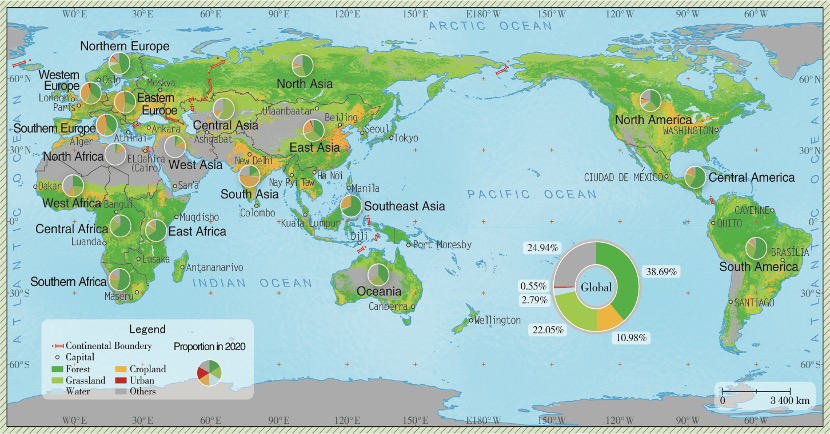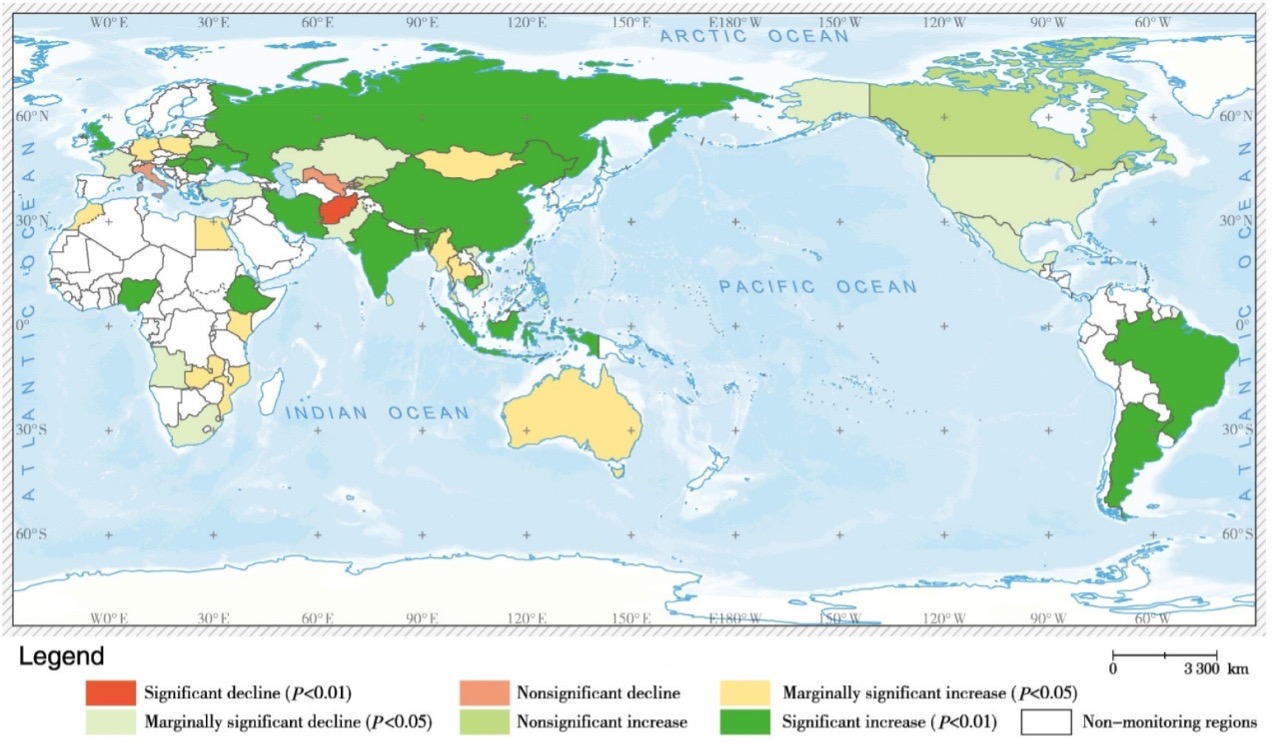2021 Annual Reports on Global Ecosystem and Environment Observation Released
China's Ministry of Science and Technology (MOST) released 2021 annual report series on November 26 to evaluate the latest development trend of global ecosystem and environment.
The annual reports cover four themes including global terrestrial ecosystems, typical lakes, Eurasian grasslands and food security, with a goal to evaluate the realizability of relevant Sustainable Development Goals (SDGs), and to facilitate relevant policymaking based on the remote sensing products and comprehensive analysis.
Out of the four annual reports, two reports are compiled by scientists from the State Key Laboratory of Remote Sensing Sciences under the Aerospace Information Research Institute, Chinese Academy of Sciences. Prof. LIU Qinhuo as well as Prof. WU Bingfang led the report compilation on global terrestrial ecosystems and food security outlook respectively.
The report titled "Sustainable Development Trend of Global Terrestrial Ecosystems" focuses on the patterns and vegetation growth of global terrestrial ecosystem, including mountain ecosystem and protected areas.
Analysis shows that the vegetation growth has improved globally, while the forest area continues to decrease, and the SDG target of ending deforestation by 2020 has not been implemented yet.

Global ecosystem patterns and proportion in 2020.
The report also points out that, during the past five years, the regions with significant reduction in forest area are primarily distributed in Southeast Asia, West Africa, Oceania, North America, and South America.
The other report titled "Crop Production Outlook and the State of Food Security" introduces the global agricultural remote sensing monitoring cloud service platform (CropWatch Cloud) to help achieve SDG2: Zero Hunger through agricultural monitoring information sharing and capacity building.
The report focuses on the change of global crop production and evaluate its self-efficiency at typical regions including Central Asia, Southeast Asia, and Sub-Saharan Africa during the period of 2020-2020.
The report also provides the production outlook of cereal and oil crops in 2021.

Trends of annual crop production per rural population in 43 major food producing countries 2010-2020.
According to the report, the platform has already provided information services for users in 173 countries worldwide and promoted the transparency of global agricultural information.
The annual reports are organized by the Global Ecosystem and Environment Observation Analysis Research Cooperation (GEOARC), a science community initiated in 2012 by the National Remote Sensing Center of China (NRSCC) under MOST.
This activities of AOGEO mainly focuses on ecological and environmental monitoring at global or regional scales, and provide information and knowledge services to support the UN SDGs.



News & Events